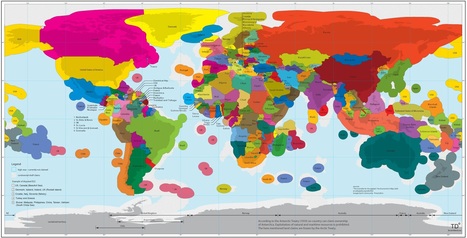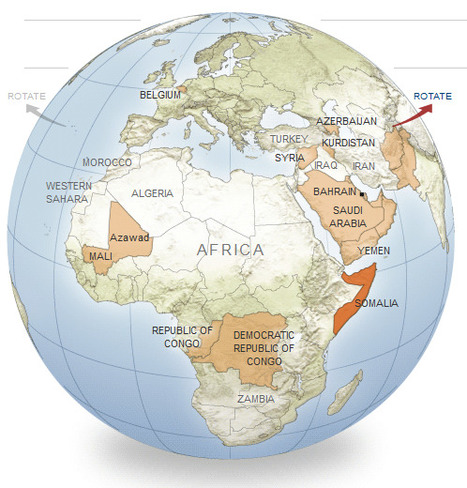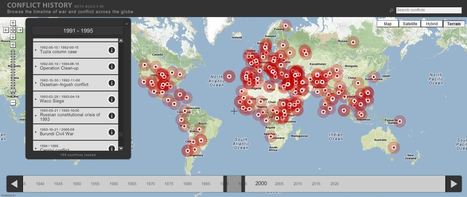Today, a country’s marine economic area is defined by its Exclusive Economic Zone (EEZ), a 200-nautical mile-wide (370 km) strip of sea along the country’s national coast line (hi-res image). This regulation, which was installed by the ‘UN Convention on the Law of the Sea’ in 1982, grants a state special rights to exploit natural (such as oil) and marine (for instance fish) resources, including scientific research and energy production (wind-parks, for example).
Questions to ponder: how does this series of buffer zones around the Earth's land masses impact politics, the environment and local economies? Where might the EEZs be more important to the success of a country/territory than other regions?
Tags: economic, environment, political, resources, water, sovereignty, coastal, environment depend, territoriality, states, conflict, unit 4 political.



 Your new post is loading...
Your new post is loading...















